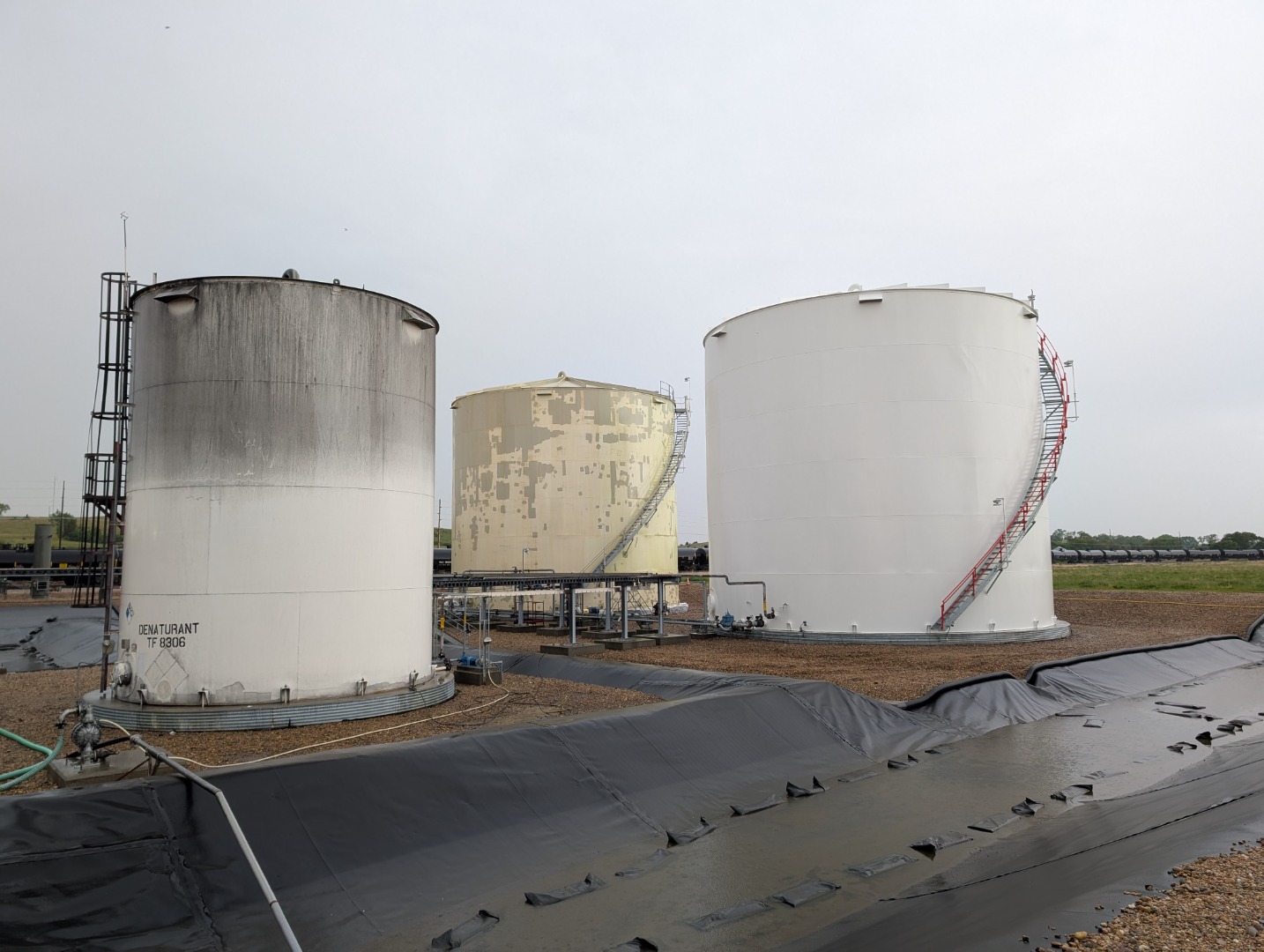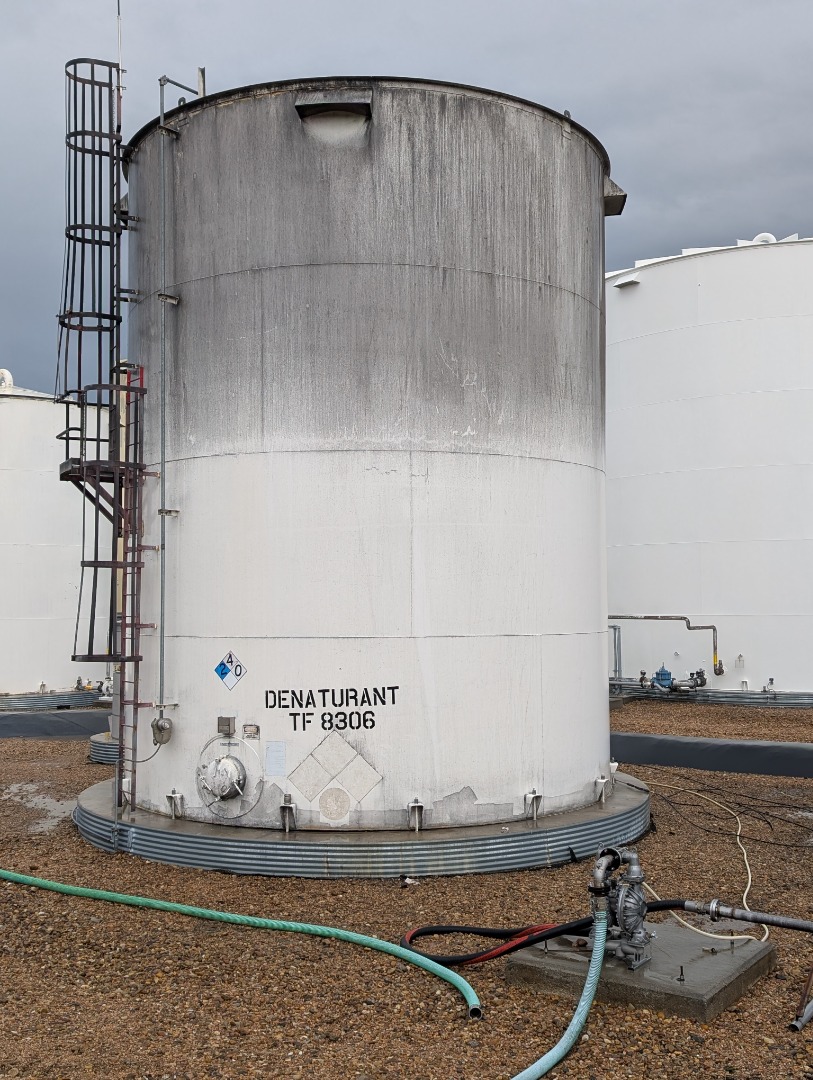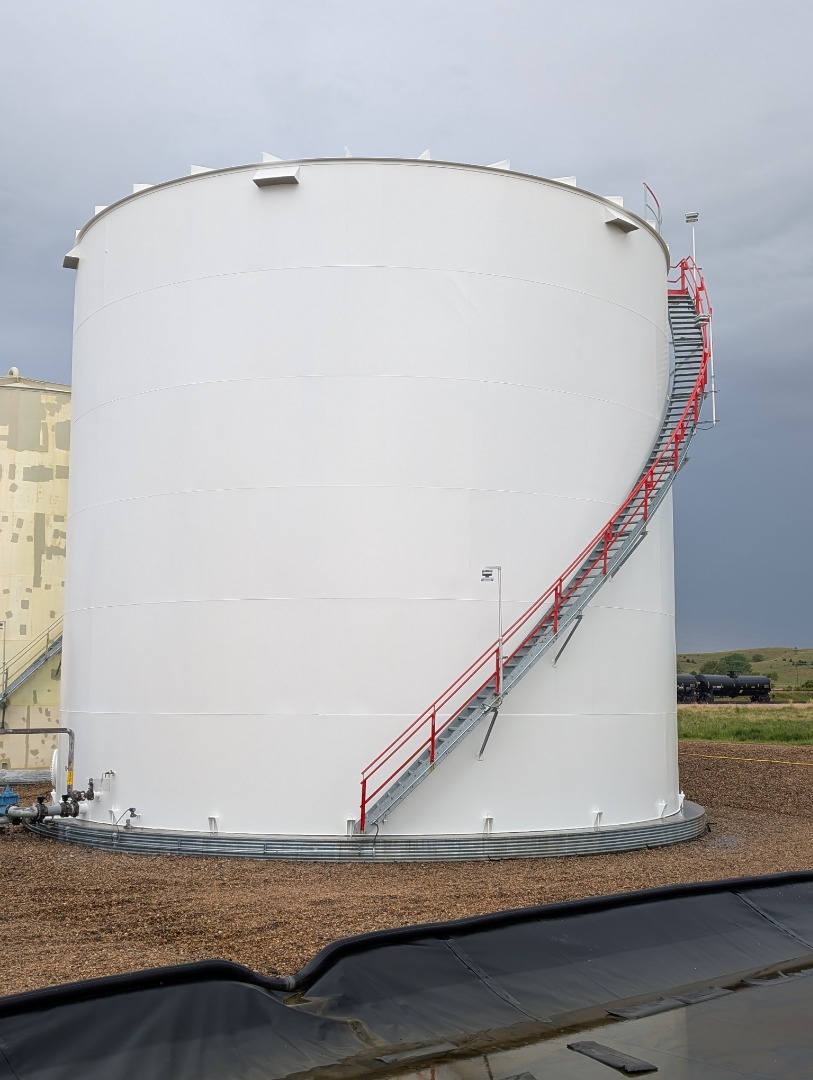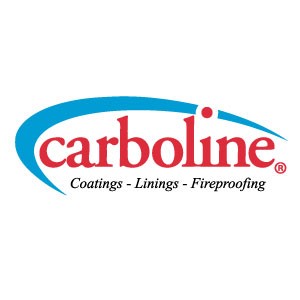On the eastern edge of the Nebraska Sandhills and nestled in the scenic Loup Valley, agribusiness meets energy.
Here, near the small town of Ord, Green America Biofuels takes in truckload after truckload of corn, processing it into ethanol. The facility produces 65 million gallons (246 million liters) of ethanol each year.
Integral to that production are five storage and process tanks.
The tanks are coated to protect against corrosion. But plant management has more to worry about than just this electrochemical phenomenon. A biological process thrives at the site, too. You know it when you see it—dark black streaks on the sides of tanks or buildings—and it must be stopped.

Ethanol plants create a unique environment
Pilot Travel Centers owns Green America Biofuels and is its sole customer. The ethanol produced here leaves the facility in trains destined for fuel blending facilities before delivery to fuel stations across North America.
If you've ever bought gas at a Pilot, Flying J, ONE9, or Mr. Fuel station, you can brag about your connection to Green America Biofuels.
The facility's geographical context usually bodes well for the performance of protective coatings.

For one thing, it is generally less humid here than in other parts of the United States. For another, air pollution in this sparse area is minuscule compared to dense urban or highly industrialized areas.
A high-performance coating, properly applied, should last a long time here.
But ethanol plants are a paradise for a particular variety of fungi that consume ethanol vapors as food. This fungal growth is visible in the form of unpleasant-looking black stains. These can be removed with a pressure washer, but that's only temporary at best. Where ethanol vapors are present, the fungi return.
As a result, facilities must choose between equally unappetizing options. They could frequently clean the surfaces impacted by the growth, or simply do nothing.
Annual or biannual cleanings would at least provide a short period of time where a tank or building exterior would appear neat and clean. But that cost adds up fast: It takes almost as long to pressure wash a tank as it does to coat one. What’s more, pressure washing is abusive, and too much of it can wear down a coating system.
This is why doing nothing is an attractive choice for those who can tolerate it. The stuff looks nasty, but there is no evidence that ethanol-eating fungi are harmful to people or products.
Even so, in spring 2025, it was time for something new at Green America Biofuels.
Ideal circumstances for Rustbond® and Carboxane® 2100 BR
Five storage tanks comprise Green America Biofuels’ tank farm: The two larger tanks are each 54 feet in diameter by 48 feet tall (16.5 meters by 14.6 meters). The three smaller tanks are each 25 feet in diameter by 30 feet tall (7.6 meters by 9.1 meters).
According to plant personnel, the tanks were built from 2007 to 2008, and were most recently painted around 2015 to 2017. The tanks had not been cleaned at any point after that, and fungal growth on their surfaces was extensive.

Carboline representatives first suggested a finish coat that inhibits fungal growth in 2022. A tank painting project was not in the plant’s budget at the time, but personnel agreed that when the time came, Carboline’s Carboxane 2100 BR would be a part of any new coating system.
Carboxane 2100 BR is an ultra-durable, fast-curing siloxane finish coat that includes a proprietary biocide proven to dramatically inhibit the growth of a range of fungi, including the variety that often plagues ethanol facilities. When applied direct-to-metal (DTM), it meets ISO 12944-6 C3 High and C4 Medium corrosion protection criteria. Its performance improves when applied over approved primer coats, as was the case here.
All parties moved swiftly when funds to recoat the tanks were released in 2025. XL Industrial Services, based in La Porte, Indiana, was selected to complete the work.
First, all tanks were pressure washed to remove fungal growth as well as any other dirt and debris. Then, they were hand-tool cleaned to SSPC SP-2.
With the surfaces properly prepared, XL crews then applied Carboguard 635 as a spot primer on areas of rust. Carboguard 635 is a versatile epoxy primer or intermediate coat suitable for atmospheric or immersion service. In this case, it was chosen because of its excellent surface wetting properties and fast cure speed that would accelerate the project schedule.
Next, the tanks received a full coat of Rusbond. Rustbond is renowned in the industry for its phenomenal wetting properties. It is typically specified for application over tightly bound rust or, as in this case, over tightly adherent existing coatings. Its ability to penetrate and negate the impacts of surface discontinuities provides an ideal surface for the adhesion of intermediate or finish coats.
The Carboxane 2100 BR finish coat followed.
Additionally, ladder cages, spiral stair handrails, and top handrails were coated in Carboxane 2000 (red), which is also an ultra-durable topcoat that exhibits excellent UV resistance and very strong weathering properties.
A bright future for five bright white tanks
In selecting a coating system including Rustbond and Carboxane 2100 BR, Green America Biofuels got the best of both worlds.
On one hand, they secured many years of phenomenal corrosion protection and weathering resistance in a high-performance system without the need for extensive surface preparation via abrasive blasting.
And on the other, the bright white shine on those tanks won’t be darkened any time soon by unsightly black fungi searching for a meal.
That’s only fitting for a part of the world this pretty.

